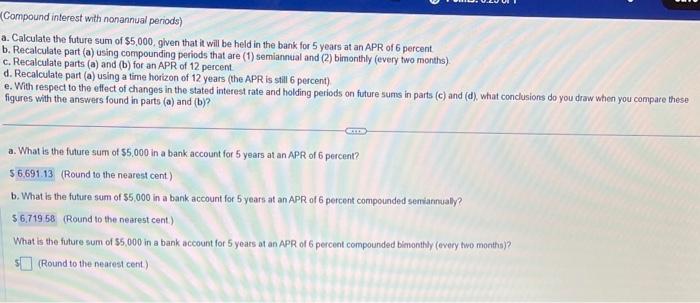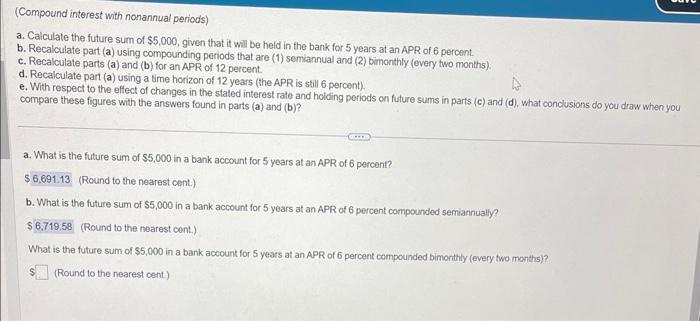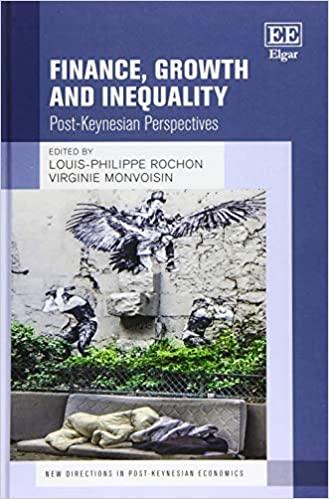a. Calculate the future sum of $5,000, given that it will be held in the bank for 5 years at an APR of 6 percent b. Recalculate part (a) using compounding periods that are (1) semiannual and (2) bimonthly (every two months) c. Recalculate parts (a) and (b) for an APR of 12 percent. d. Recalculate part (a) using a time horizon of 12 years (the APR is still 6 percent) e. With respect to the effect of changes in the stated interest rate and holding periods on future sums in parts (c) and (d). what conclusions do you draw when you conpare these figures with the answers found in parts (a) and (b)? a. What is the future sum of $5,000 in a bank account for 5 years at an APR of 6 percent? (Round to the nearest cent) b. What is the future sum of $5,000 in a bank account for 5 years at an APR of 6 percent compounded senviannualy? (Round to the nearest cent) What is the future sum of $5,000 in a bank account for 5 years at an APR of 6 percent compounded bimonthy (every two monthis)? (Round to the nearest cent) a. Calculate the future sum of $5,000, given that it will be held in the bank for 5 years at an APR of 6 percent. b. Recalculate part (a) using compounding periods that are (1) semiannual and (2) bimonthly (every two months). c. Recalculate parts (a) and (b) for an APR of 12 percent. d. Recalculate part (a) using a time horizon of 12 years (the APR is still 6 percent). e. With respect to the effect of changes in the stated interest rate and holding periods on future sums in parts (c) and (d), what conclusions do you draw when you compare these figures with the answers found in parts (a) and (b)? a. What is the future sum of $5,000 in a bank account for 5 years at an APR of 6 percent? (Round to the nearest cent.) b. What is the future sum of $5,000 in a bank account for 5 years at an APR of 6 percent compounded semiannually? (Round to the nearest cont.) What is the future sum of $5,000 in a bank account for 5 years at an APR of 6 percent compounded bimonthly (every two months)? (Round to the nearest cent)








